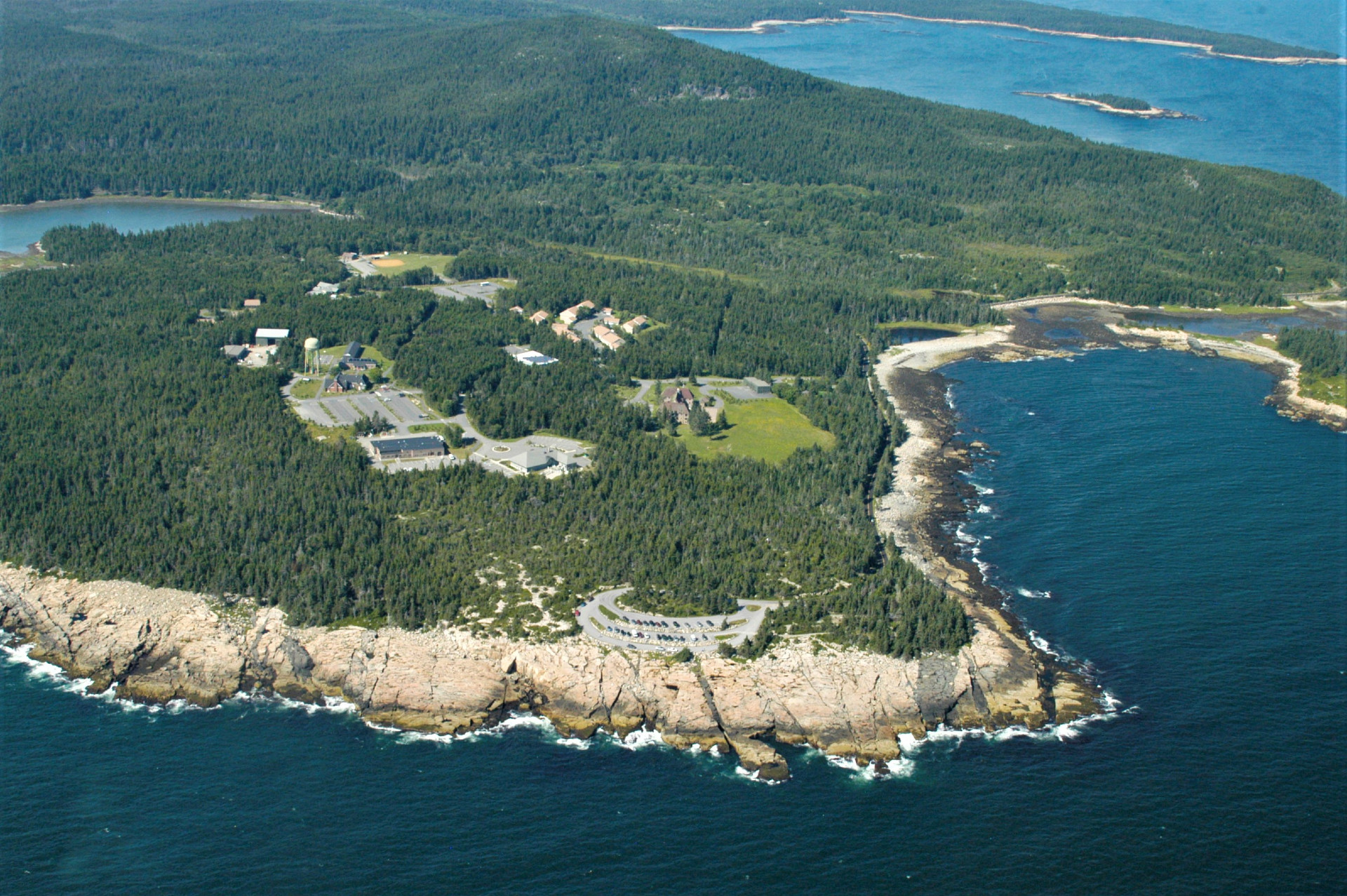Great American Outdoors Act will fund improvements to Acadia National Park water systems
January 19th, 2023
January 19th, 2023

Aerial view of the Schoodic District in Acadia National Park showing the facilities of the Schoodic Institute campus, which was converted from a former Navy base. (NPS photo)
BAR HARBOR, MAINE – The National Park Service has awarded a $7.8 million contract to rehabilitate the water and wastewater distribution systems in Acadia National Park’s Schoodic District. Funded by the Great American Outdoors Act (GAOA), the project will improve critical utility systems, which were installed in the 1970s.
The project will upgrade the systems, including the renovation of deteriorated lift stations with new pumps, mechanical components, and controls. It will inspect and replace wastewater collection lines, minimizing the potential for lines to freeze. Facilities will remain open during the project. This project, which addresses $6.4 million of deferred maintenance and repairs associated with these facilities, will support 100 jobs and contribute an estimated $21.8 million to the nation’s economy. The NPS awarded the construction contract to a local business, Harold MacQuinn, Inc. of Hancock, Maine.
“This is excellent news for Acadia National Park and local businesses,” said Superintendent Kevin Schneider. “The Schoodic District receives about 250,000 visits each year, and this project will invest in our backbone infrastructure and safeguard the health and safety of park visitors and employees.”
Infrastructure funding from GAOA and the Bipartisan Infrastructure Law are part of a concerted effort to address the extensive deferred maintenance and repair backlog in national parks. Supported by revenue from energy development, GAOA’s Legacy Restoration Fund provides the National Park Service with up to $1.3 billion per year for five years to make significant enhancements in national parks to ensure their preservation and provide opportunities for recreation, education, and enjoyment for current and future visitors.
In 2021, Acadia National Park received about 4.1 million visits, which generated an estimated $486 million in visitor spending. These expenditures had a total economic output of about $702 million that supported more than 6,800 jobs in the local region.
Acadia National Park Gets Funding To Repair Water, Wastewater Systems – via National Parks Traveler